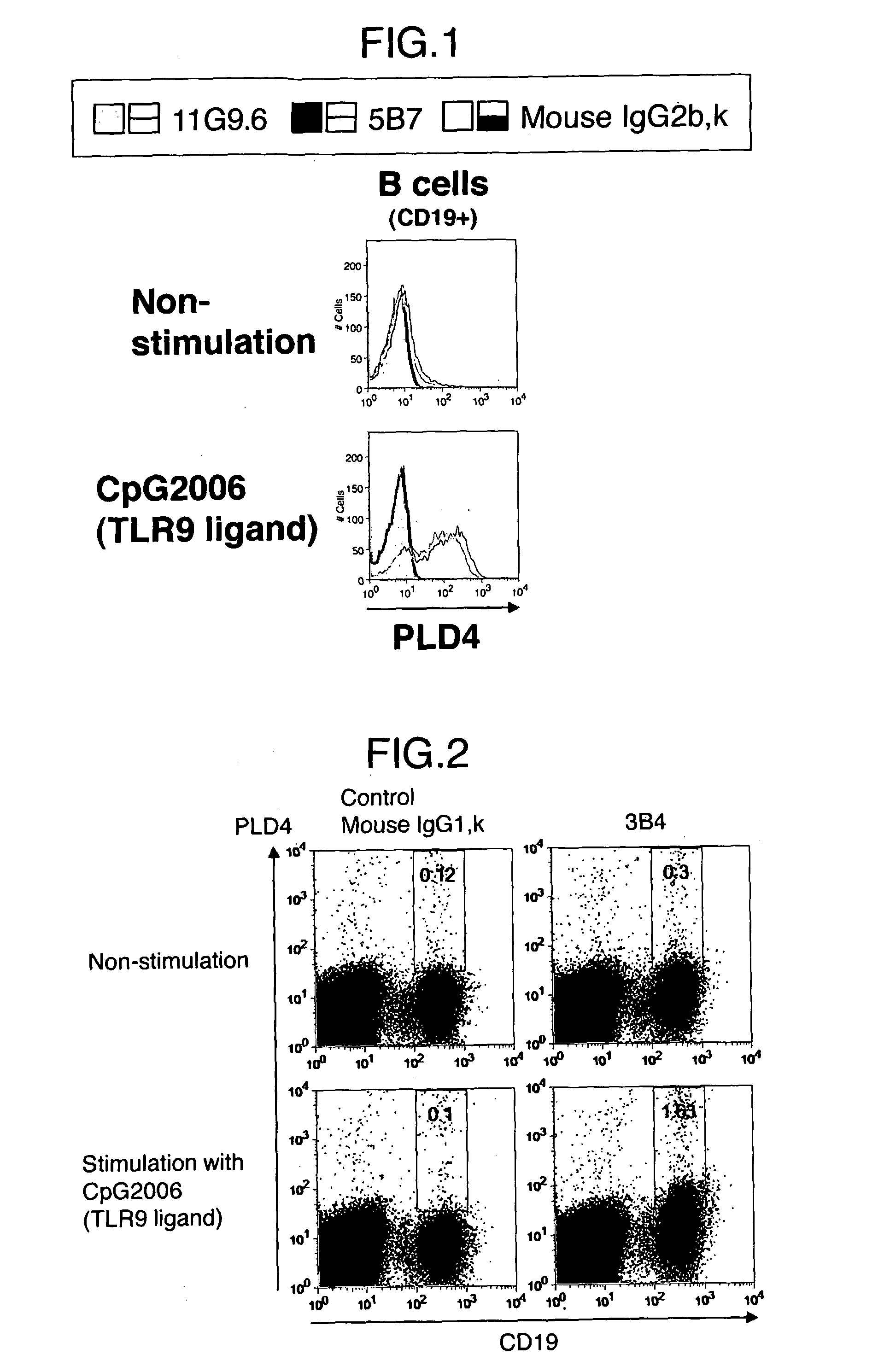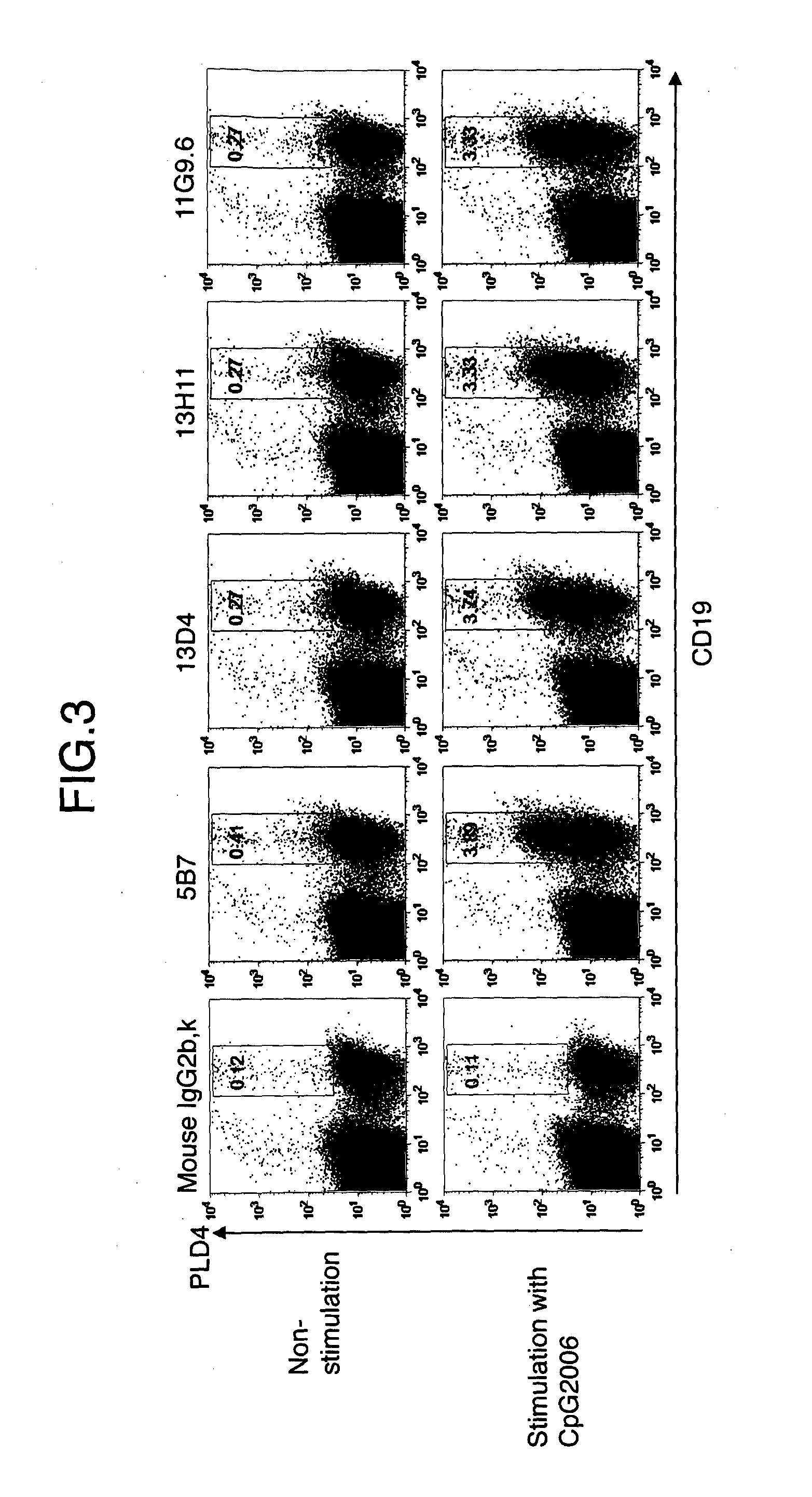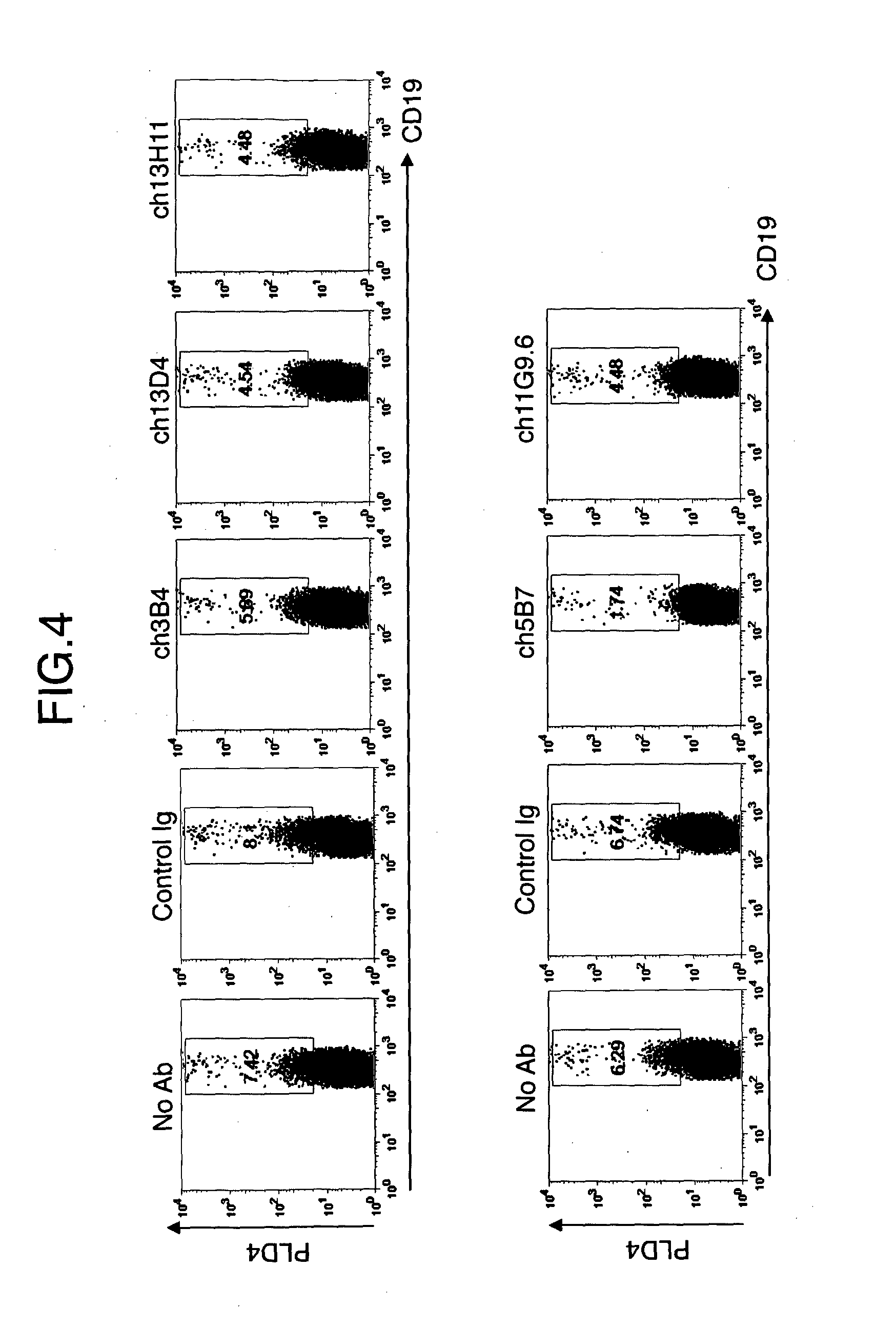Medicament comprising Anti-phospholipase d4 antibody
- Summary
- Abstract
- Description
- Claims
- Application Information
AI Technical Summary
Benefits of technology
Problems solved by technology
Method used
Image
Examples
example 1
[0119]Human PBMC (1×107 cells / ml) was stimulated by CpG2006, a ligand of TLR9, (a final concentration of 1 LM) and incubated in a 24 well plate in a CO2 incubator (37° C., 5% CO2) for about 20 hours. In parallel, human PBMC (1×107 cells / ml) which was not stimulated was also cultured in a CO2 incubator (37° C., 5% CO2) for about 20 hours.
[0120]Human PBMC was treated with FcR Blocking Reagent (Miltenyi), which was diluted 5-fold with FACS buffer (1% FBS / PBS), at 4° C. for 20 minutes. After washing, staining was carried out with 5B7, 11G9.6 or mouse IgG2b, κ, a primary antibody, (each 10 μg / ml) at 4° C. for 15 minutes. A secondary antibody and subsequent antibodies were diluted with FACS buffer so that FcR Blocking Reagent would be diluted 25-fold. PE-labeled anti-mouse Ig (BD), a secondary antibody, was diluted 100-fold and the solution was added thereto and mixed. Besides, to fractionate B cells on FACS, an APC-labeled anti-human CD 19 antibody (Biolegend) was diluted 30-fold with FA...
example 2
Binding Test to B Cells by Each Monoclonal Antibody
[0121]Human PBMC was stimulated with CpG2006 with a final concentration of 1 μM for about 20 hours. Cells were collected and treated with FcR Blocking Reagent at 4° C. for 20 minutes. After washing, staining was carried out with each 10 μg / ml of 3B4, 5B7, 13D4, 13H11, 11G9.6, mouse IgG1, K or mouse IgG2b, κ, a primary antibody, at 4° C. for 15 minutes. Staining was carried out with PE-labeled anti-mouse Ig, a secondary antibody, at 4° C. for 15 minutes. For gating of a B cell group, double staining was carried out with an APC-labeled anti-human CD19 antibody at 4° C. for 15 minutes. A living cell group on the dot plot of the X axis: FSC and the Y axis: SSC was analyzed by binding of anti-PLD4 antibody to CD19+ B cells (FIG. 2 and FIG. 3) Consequently, all of the tested anti-PLD4 monoclonal antibodies were bound to B cells stimulated by TLR9. That is, it was verified that by all anti-PLD4 monoclonal antibodies, expression of PLD4 was...
example 3
Cytotoxic Activity of Anti-PLD4 Chimeric Antibodies Against Activated B Cells
[0122]Frequency of PLD4+ activated B cells induced by stimulation with TLR9 ligand (1 μM) was used as an index. Human PBMC was cultured with CpG2006 and each anti-PLD4 chimeric antibody or control Ig for about 16 hours. As a medium, RPM11640 (SIGMA) was used (including 10% FBS (Equitech-bio), 5 ml of 200 mML-Glutamine (GIBCO), 5 ml of Pen-Strep (GIBCO), 5 ml of Sodium Pyruvate (GIBCO), and 0.5 ml of 50 mM 2-ME (SIGMA)). The cells were collected and treated with FcR Blocking Reagent at 4° C. for 20 minutes. After washing, the cells were further stained by 5B7 or 13D4, 3B4 or mouse IgG2b, K, a primary antibody, at 4° C. for 15 minutes (each 10 g / ml). A sample in which PBMC was treated with a chimeric 3B4 antibody (ch3B4), a chimeric 3D4 antibody (ch3D4), or a chimeric 13H11 antibody (ch13H11) was stained with 5B7, and a sample in which PBMC was treated with a chimeric 5B7 antibody (ch5B7) or a chimeric 11G9.6...
PUM
 Login to View More
Login to View More Abstract
Description
Claims
Application Information
 Login to View More
Login to View More - Generate Ideas
- Intellectual Property
- Life Sciences
- Materials
- Tech Scout
- Unparalleled Data Quality
- Higher Quality Content
- 60% Fewer Hallucinations
Browse by: Latest US Patents, China's latest patents, Technical Efficacy Thesaurus, Application Domain, Technology Topic, Popular Technical Reports.
© 2025 PatSnap. All rights reserved.Legal|Privacy policy|Modern Slavery Act Transparency Statement|Sitemap|About US| Contact US: help@patsnap.com



